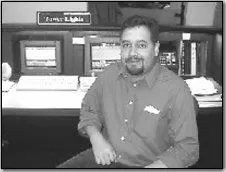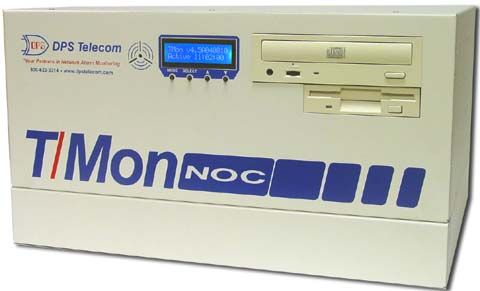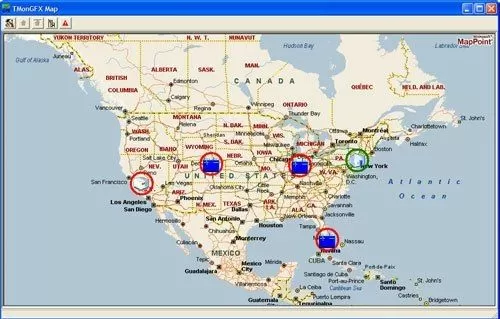Check out our White Paper Series!
A complete library of helpful advice and survival guides for every aspect of system monitoring and control.
1-800-693-0351
Have a specific question? Ask our team of expert engineers and get a specific answer!
Sign up for the next DPS Factory Training!

Whether you're new to our equipment or you've used it for years, DPS factory training is the best way to get more from your monitoring.
Reserve Your Seat TodayThis interview was held with Steve Smith of Sprint PCS. DPS' Director of Technical Sales Eric Storm conducted the interview.

Storm: "How long have you had the DPS system?"
Smith: "It's been 4 years. DPS was the first system we've had since we started our buildout. That is, before we had network connectivity at the sites, we had towers out there and we used the DPS system primarily to monitor our tower lights but we also use DPS equipment to monitor cell site generators, doors, on-site equipment cabinets, etc."
Storm: "Over the years you've been adding additional masters so it looks like you've been expanding quite a lot."
Tech Support "Always Solved our Problem."Smith: "Absolutely. After our first buildout, it took about 1-1/2 years, but afterward as we expanded, we realized we needed additional DPS boxes."
Storm: "During that time have you ever had the need for tech support?"
A Backup NOC in an Underground Bunker.Smith: "Yes, absolutely. On occasion we've been assisted by John Maldonado. He's always been very helpful, courteous and always solved our problem. We were experiencing a memory fault error. We called DPS and within 2 minutes we had the problem solved, so we were very happy about that."

Storm: "You mentioned that you had a back up system as well. Was that part of a disaster recovery plan?"
Smith: "Absolutely. Since we are based in Kansas we are in tornado alley, so any time they issue a tornado warning, we will usually evacuate the NOC to a back up NOC, which is an underground bunker to protect the equipment from the elements. Generally, 3 or 4 times a year we will end up in the back up NOC, at which time all we have to do is fire up the system and we are ready to start polling again. In the beginning when we first brought it in, it was intended to be our transitional system, that is something to get us where we needed to be until such time as we had a permanent fault management system in place. But because it was so dependable and worked so well it stayed. I don't think there will ever be a time when we won't have DPS monitor our tower lights."
How long a monitoring system lasts is important. It's an infrastructure investment, and you also spend a lot of time removing an old system and installing a new one.
So how long should your monitoring system last? 5 years is the minimum acceptable standard. 10 years is even better.
To maximize your system life, the first thing you need to do is pick a manufacturer that makes equipment with proven quality. Forget compatibility for a minute. It doesn't matter how forward-thinking your system is if it can't survive very long. Look for a metal chassis, durable powder coat, few/no moving parts, and a wide temperature tolerance.
Next, you need to make sure your equipment was designed for the foreseeable future. Don't install equipment based on legacy standards. Don't install equipment based on proprietary standards, either. If you do that, you're one going-out-of-business event away from having no ability to purchase new units or spare parts.
System Coverage.Just like Steve at Sprint, your network is liable to expand. You can't do much to control this, and it's a great opportunity for your company to grow. What you CAN control is your ability to expand your monitoring system. When you choose a master station, choose one with at least 40% excess capacity so you can add sites without immediately having to upgrade. An alternative to this is a manufacturer upgrade policy (ex. "Get 100% of the price you paid back as a credit when you upgrade within 1 year").
As far as RTUs are concerned, you'll want at least 15% excess capacity in case an individual site has expanding monitoring needs. What's more important, however, is that your manufacturer offers a range of RTU capacities. What if you had to turn up a very small new site next week? Would you have to burn budget dollars on an overkill RTU, or does your manufacturer have smaller-scale options?

Good remote monitoring is deceptively complex. It's common to believe you can just set it all up yourself. The truth is, for a simple system, that's correct. Most people can wire up a simple system and get alerts on their master console.
Setting up GOOD monitoring, however, is a much more complex job. You're going to want a sophisticated notification schedule, advanced logic for automatic problem detection, and other valuable tools. These skyrocket your efficiency and minimize network-affecting outages, but they do take some time and effort to set up initially.
That's where your manufacturer's tech support comes in. Who will you be talking to? Where will they be located? What will be their response time?
Ideally, you want to have a tech support team at your manufacturer's US engineering headquarters. There's no place on the planet with better tech experts that the engineering department, obviously. You don't want an overseas call center reading from a script.
Backup NOC Centers.Having a backup NOC in a different location is key for a variety of reasons. If you experience tornadoes or floods or hurricanes or earthquakes, your NOC is perpetually at risk. You need a backup. Even if you have the calmest weather in the world, what about extended power failures? Having a backup NOC is always a good idea.
A quality master station is a key part of your backup equation. You should be able to deploy a master at each NOC. One will act as the secondary. It will run in the background, synchronizing with your primary master. If disaster strikes at your primary NOC is offline, the secondary master should take over in 30 seconds or less. That's the power of redundancy.
Do you have questions about our products and services?
Give us a call at our toll-free number and talk to one of our specialists. They'll help answer any questions you may have.